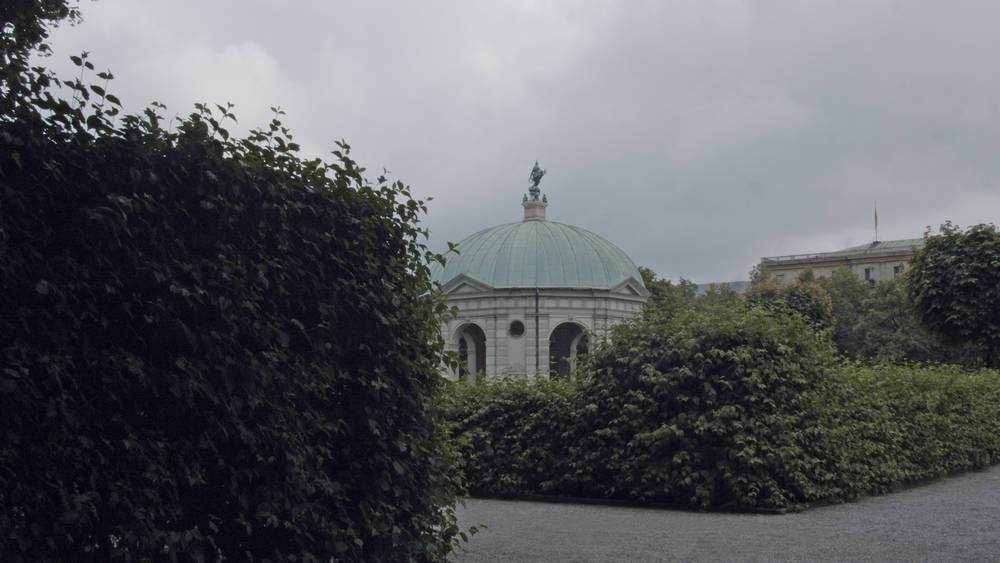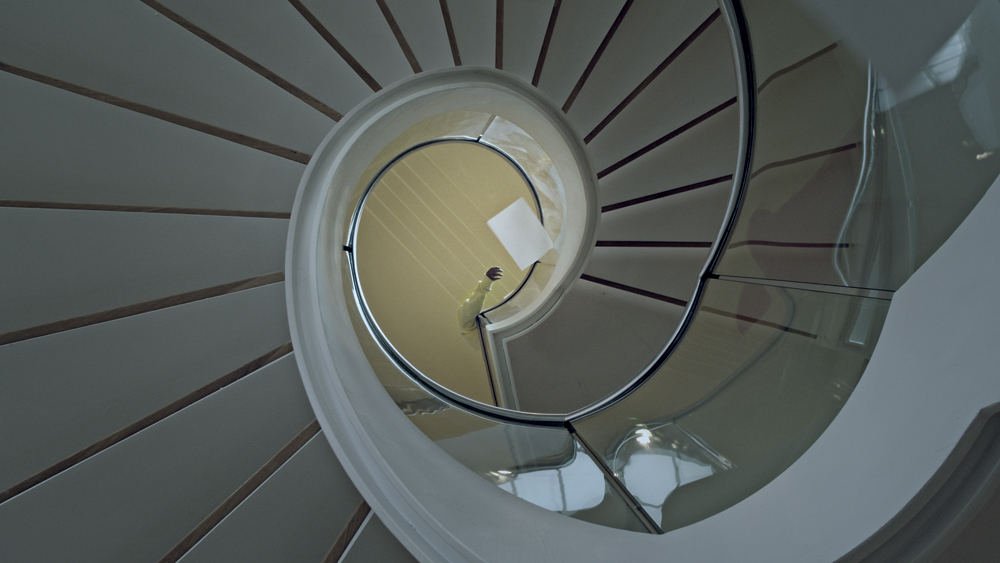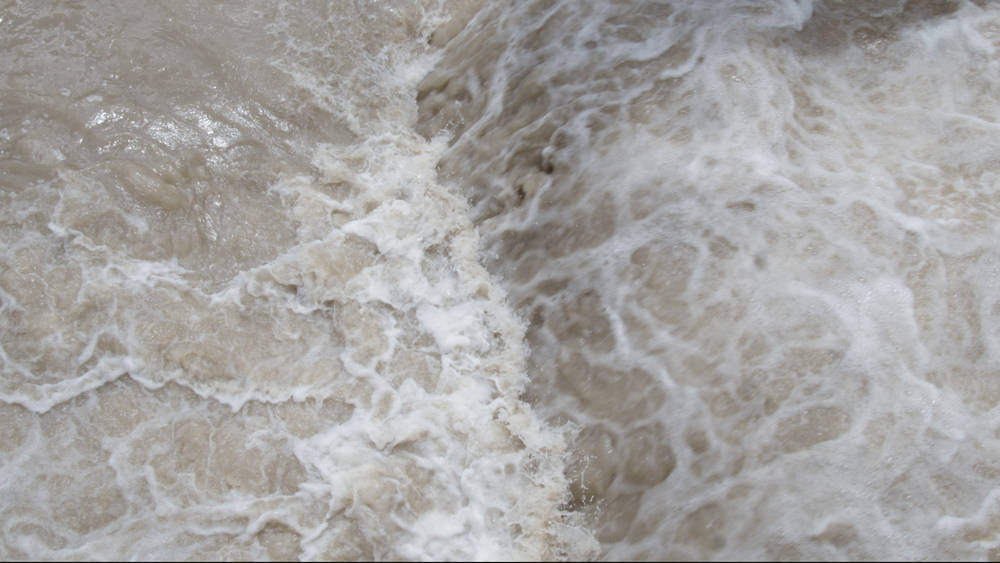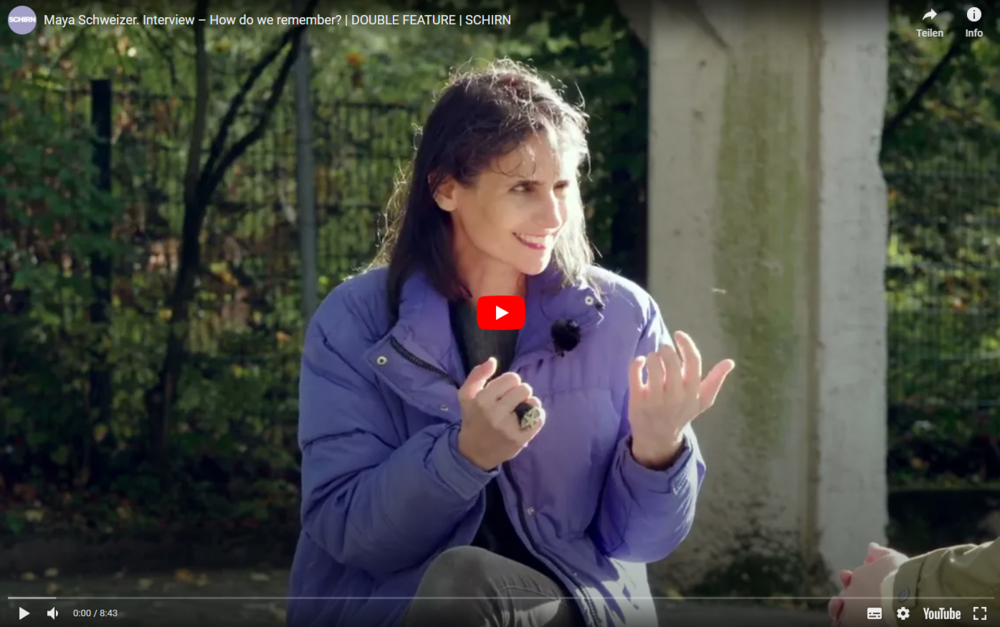In which places does history become visible? And what do we remember at all? Maya Schweizer begins her search for clues in the sewers and slowly feels her way to the surface of Nazi history in Munich.
If you imagine the city like a human body, then the sewers would probably be like the nervous system. Hence, a journey through the endless pathways of the sewers might be considered a journey through the subconscious, since the subterranean labyrinth represents the hidden aspects of urban living. One might spin this analogy even further: The sewers carry away everything that’s unwanted, the filth, the dirt, and are then supposed to dispose of it, process it, and make it usable again. Perhaps that’s why Maya Schweizer’s film “Voices and Shells” (2020) begins in Munich’s sewer system: “At first, it was an attempt to examine this city from a rather different approach,” the artist said in an interview.
Maya Schweizer created “Voices and Shells” specially for the exhibition “Stimmen” (“Voices”), for which a further ten works by the artist were on show at Munich’s Villa Stuck until March this year. In “Voices and Shells”, Schweizer interweaves footage she produced herself with found-footage material, primarily excerpts from documentary and feature films. The soundtrack also features historical recordings of Hannah Arendt, Gertrude Stein and Sylvia Plath combined with recordings she produced herself.
“Voices break through walls. They have accents, doubts, emotions, faces, memories…,” whispers an off-screen voice, while the camera offers insights into the gloomy drainage system of Munich’s sewers. The memories that are evidently the focus here are never pinpointed in speech, but rather evoked gradually by the image: Starting with subterranean Munich, the camera circles around once it reaches the surface of the city – the Nazis’ so-called “capital of the movement” – taking in the Musikhochschule (site of the former “Führerbau”), the Haus der Kunst (which opened in 1937 as the “Haus der Deutschen Kunst”, the House of German Art, with the “Große Deutsche Kunstausstellung” exhibition), and the Feldherrenhalle (where Hitler had his “Blutzeuge” memorial erected).
Voices break through walls. They have accents, doubts, emotions, faces, memories…

Confrontation of both individual and collective repression, reappraisal and remembrance are themes that recur in Maya Schweizer’s work. “Manou, La Seyne-sur-Mer” (2011) and “Passing Down, Frame One” (2007) are focused on her Jewish grandmother, who only survived the Nazi occupation in France because she went into hiding and was continually on the run. In “A Memorial, a Synagogue, a Bridge, and a Church” (2012), she searched a square in Bratislava for traces of a former synagogue, while in “Regarde par ici,... Und dort die Puschkinallee” (2018), it is a watchtower on the former border between East and West Berlin that forms the starting point for the cinematic exploration.
Shells as silent witnesses of history
As a recurring theme alongside the fragments of sound in “Voices and Shells”, on a visual level the eponymous shells appear and are also continually reflected in other motifs – for example in spiral staircases oscillating within themselves or never-ending whirlpools of water. They are forms which, theoretically, reach into infinity. Depending on the type, shells, too, can be up to 500 years old. That’s half a millennium. Maya Schweizer seems to be questioning them as silent witnesses to history, about the events of that time in that city, about which many people have long been reluctant to speak.


For her second film, Maya Schweizer has chosen “Le souvenir d’un avenir” (Remembrance of Things to Come) by the French filmmaker, writer and photographer Chris Marker. Released in 2001, the work is best described as a kind of film essay that is an homage to French photographer Denise Ballon, with the participation of her daughter Yannick Bellon who is herself a director. Bellon was a co-founder of the “Alliance-Photo”, a forerunner of the well-known photography agency “Magnum Photos”, and had close links with the Surrealist movement. Hence, alongside Man Ray, she also documented the “Exposition Internationale du Surréalisme” in 1938.
The famous photos of Salvador Dali’s Rainy Taxi, with which Chris Marker begins “Le souvenir d’un avenir”, were all taken by Bellon. She made portraits of a number of Surrealists and their works, documented war veterans of the First World War, French colonial rule on the African continent and the preparations for war in Finland in 1940. During the time of the Nazi occupation in France, Bellon, also Jewish like Maya Schweizer’s grandmother, likewise went into hiding and thus escaped the Shoah.

Souvenir d'un Avenir – Remembrance of Things to Come — Chris Marker & Yannick Bellon, Image via chrismarker.org
On the visual level, Marker collages photos by Denise Bellon in an incomparable way, while the off-screen voice of actor Pierre Arditi (in the English version it is Canadian actress Alexandra Stewart) classifies and interweaves the images, world history, and Bellon’s personal life story. Against the historical backdrop of the totalitarian, collectivist and inhuman mania that was rampant in the 20th century, each individual image in “Le souvenir d’un avenir” seems to be inscribed with a dark foreboding that is impossible to escape so many years later. And thus Denise Bellon’s own assertion is more than validated: “Being a photographer means not only to look but to sustain the gaze of others.”










